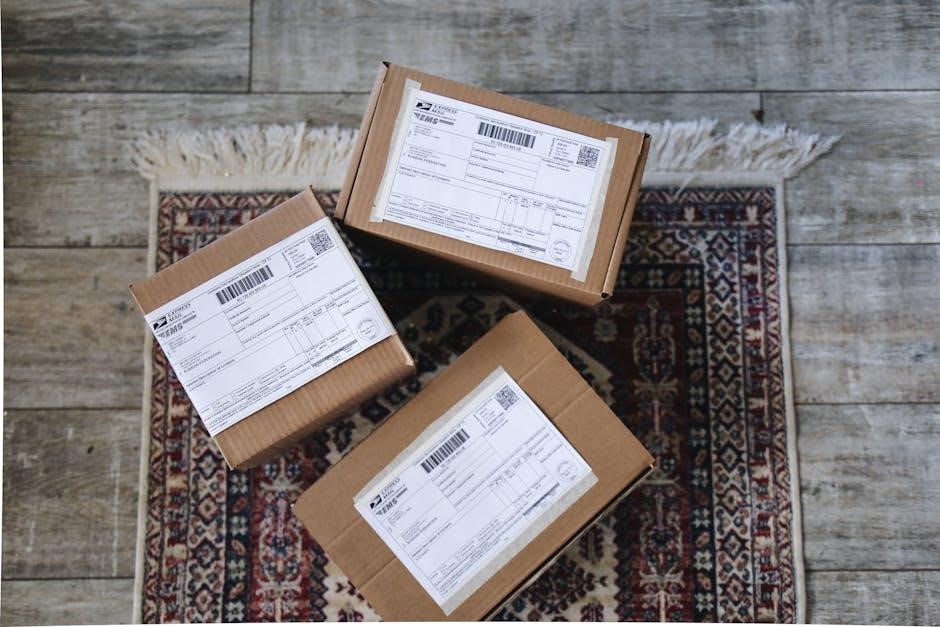Proper post-sclerotherapy care is essential for optimal recovery, minimizing complications, and achieving desired results. Following guidelines ensures smooth healing, reduces side effects, and promotes overall vascular health effectively.
Understanding the Importance of Aftercare
Proper aftercare is critical for minimizing complications and ensuring the best outcomes following sclerotherapy. Wearing compression stockings improves circulation, reduces swelling, and prevents blood clots. Adhering to guidelines helps avoid side effects like hyperpigmentation and inflammation. By following post-treatment instructions, patients can enhance healing, maintain vascular health, and achieve optimal cosmetic results. Consistency in care ensures a smoother recovery and supports the effectiveness of the treatment. Prioritizing aftercare routines is essential for long-term success and patient satisfaction.

Immediate Post-Treatment Instructions
After sclerotherapy, wear compression stockings, walk for 30 minutes, avoid strenuous exercise, and keep the treated area clean. Follow these steps to ensure proper healing and results.
Wearing Compression Garments
Wearing compression stockings is crucial after sclerotherapy to improve circulation, reduce swelling, and support healing. They should be worn for 7–14 days, depending on your doctor’s advice. Compression garments provide graduated pressure, helping to close treated veins and prevent blood pooling. Wear them during the day and night as directed. This ensures optimal results and minimizes side effects like bruising and discomfort. Proper fit is essential to avoid restricting blood flow.
Walking and Activity Levels
Walking is essential after sclerotherapy to promote blood flow and healing. Take a 10-minute walk immediately post-treatment and continue with daily walks of at least 30 minutes. Avoid strenuous activities for 48 hours, as increased blood flow can dislodge the sclerosing agent. Light exercises like swimming or gentle stretching are permissible after 2 days. Regular movement helps reduce swelling and discomfort while supporting the treatment’s effectiveness. Avoid prolonged sitting or standing to ensure proper circulation and optimal recovery outcomes.
Hygiene and Wound Care
Proper hygiene is vital after sclerotherapy to prevent infection. Gently cleanse the treated area with mild soap and water daily. Pat dry thoroughly to avoid moisture buildup; Avoid shaving or exfoliating the area until fully healed. If minor itching occurs, it indicates healing progress. Apply antiseptic solutions as directed to maintain cleanliness. Avoid submerging the treated area in water (e.g., baths or pools) for 48 hours. Use clean towels and avoid sharing personal care items to minimize infection risks. This ensures a safe and effective recovery process.
Elevating Your Legs
Elevating your legs above heart level for 30 minutes several times a day reduces swelling and bruising post-sclerotherapy. This simple practice enhances blood flow and promotes healing. Avoid crossing your legs or sitting for prolonged periods. Gentle movement, like short walks, complements elevation by stimulating circulation without overexertion. Consistent elevation supports faster recovery and minimizes discomfort, ensuring optimal outcomes from the treatment.

Managing Symptoms and Discomfort
Post-sclerotherapy symptoms like itching, bruising, or swelling can be managed with acetaminophen for pain and compression stockings. Staying hydrated and avoiding strenuous activities helps reduce discomfort and promote healing effectively.
Expected Side Effects
Common side effects after sclerotherapy include mild itching, temporary bruising, and swelling at the injection site. These reactions are usually temporary and subside within days. Some patients may experience redness or skin discoloration, which fades over time. In rare cases, more serious complications like inflammation or blood clots can occur. It’s essential to monitor these symptoms and consult your healthcare provider if they persist or worsen. Proper aftercare can help minimize these effects and ensure a smooth recovery process.
Using Pain Relief Medication
Acetaminophen (Tylenol) is recommended for managing mild pain or discomfort after sclerotherapy. It is advised to avoid NSAIDs like ibuprofen or aspirin, as they may interfere with blood clotting. Always follow your healthcare provider’s guidance on medication use. Pain relief should be minimal, as discomfort typically subsides within a few days. Over-the-counter medications are usually sufficient, but consult your doctor if pain persists or worsens. Proper medication use supports a comfortable and effective recovery process.
Reducing Bruising and Swelling
Elevating your legs above heart level for 30 minutes several times a day can help reduce swelling and bruising. Wearing compression stockings consistently aids in minimizing bruising and promotes blood flow. Gentle walking is encouraged to enhance circulation without overexertion. Avoiding direct sun exposure and applying arnica gel may also help alleviate bruising. These practices, combined with proper rest, can significantly reduce post-treatment swelling and discoloration, ensuring a smoother recovery process and better aesthetic outcomes.
Physical Activity Guidelines
Post-sclerotherapy, a balanced approach to activity is crucial. Walking is encouraged immediately after treatment, while strenuous exercises should be avoided for 48 hours to support recovery.
Recommended Exercises
Light exercises like walking and gentle stretching are highly recommended post-sclerotherapy. Walking for at least 30 minutes daily promotes circulation and healing. Activities like swimming or using a treadmill are also beneficial. Avoid high-impact exercises or weightlifting for the first 48 hours. Gentle movements help prevent blood from pooling in treated veins, reducing swelling and discomfort. Consistent, moderate activity supports recovery and ensures optimal results, while avoiding overexertion protects the treated areas. Balance is key to a smooth healing process.
Activities to Avoid
Avoid strenuous exercises, heavy lifting, and prolonged sitting for 48 hours post-treatment. Refrain from high-impact activities like running or jumping, as they can dislodge blood clots. Avoid bending over or crossing your legs, as this increases pressure on treated veins. Do not engage in activities that cause excessive sweating, as this may lead to discomfort or swelling. Avoiding these activities helps minimize complications, ensures proper healing, and supports the effectiveness of the sclerotherapy treatment.
Importance of Movement
Gentle movement is crucial after sclerotherapy to promote blood flow and prevent clot formation. Take short walks within 24 hours to stimulate circulation without overexertion. Avoid prolonged sitting or standing, which can hinder healing. Light activities help maintain healthy blood flow and reduce swelling. However, avoid vigorous exercise or bending that increases vein pressure. Regular, moderate movement supports the healing process and ensures optimal results from the treatment.

Sun Protection and Skin Care
Protecting your skin from sun exposure is crucial after sclerotherapy to prevent complications. Use high SPF sunscreen and wear protective clothing to safeguard your skin effectively.
Preventing Sun Damage
After sclerotherapy, sun protection is vital to avoid complications. Use a broad-spectrum sunscreen with at least SPF 30 daily. Wear protective clothing and seek shade when outdoors, especially during peak hours. Avoid tanning beds, as they can cause skin discoloration. Sun exposure may lead to hyperpigmentation or worsen bruising. By taking these precautions, you protect your skin and ensure a smoother recovery. Consistent sun protection helps maintain the effectiveness of your treatment;
Skincare Routine
A gentle skincare routine is crucial after sclerotherapy to maintain healthy skin. Avoid harsh products and exfoliants for at least two weeks. Use mild, fragrance-free cleansers and moisturizers to keep the skin hydrated and soothed. Avoid direct sunlight and always apply sunscreen. Gently clean the treated area with soap and water to prevent infection. Avoid scratching or rubbing the skin, as this can cause irritation. Stick to non-comedogenic products to ensure proper healing and avoid clogged pores. Consult your specialist for product recommendations tailored to your skin type.

Dietary and Lifestyle Advice
Stay hydrated, maintain a balanced diet, and avoid smoking or excessive alcohol. These habits support circulation, reduce swelling, and promote overall recovery post-sclerotherapy.
Hydration Tips
Staying hydrated is crucial after sclerotherapy. Drink at least 8-10 glasses of water daily to maintain proper circulation and support healing. Avoid alcohol, as it can dehydrate you. Incorporate water-rich foods like cucumbers and oranges into your diet. Herbal teas can also contribute to your hydration goals. Proper hydration helps flush out medications and reduces swelling, ensuring a smoother recovery process.
Nutritional Recommendations
A balanced diet rich in vitamins and minerals supports healing after sclerotherapy. Include leafy greens, citrus fruits, and whole grains to boost circulation and reduce inflammation. Opt for lean proteins like fish and poultry to aid tissue repair. Avoid processed foods and sugary snacks, as they can increase inflammation. Limit caffeine and sodium to prevent fluid retention. A nutrient-dense diet promotes overall health and accelerates recovery, ensuring the best outcomes from your treatment.

Monitoring for Complications
Monitor for signs of inflammation, swelling, or pigmentation changes. Watch for warmth, redness, or pain at injection sites. Seek medical attention if symptoms persist or worsen unexpectedly.
Recognizing Warning Signs
Monitor for signs of inflammation, swelling, or pigmentation changes. Watch for warmth, redness, or pain at injection sites. Seek medical attention if symptoms persist or worsen. Be aware of severe side effects like difficulty breathing, chest pain, or allergic reactions. If you notice unusual bruising, blistering, or skin discoloration, contact your healthcare provider immediately. Early detection of complications ensures timely intervention and prevents long-term issues. Stay vigilant to safeguard your recovery and overall well-being post-sclerotherapy.
When to Seek Medical Help
Contact your healthcare provider immediately if you experience severe swelling, warmth, redness, or pain at injection sites. Seek help if you notice difficulty breathing, chest pain, or signs of infection like fever. Report any unusual bruising, blistering, or skin discoloration. If symptoms persist or worsen, consult your doctor promptly. Monitor for allergic reactions or numbness. Early medical intervention is crucial for addressing complications and ensuring a safe recovery. Don’t delay seeking help for concerning symptoms post-sclerotherapy.

Returning to Normal Activities
Most individuals can resume daily routines immediately after sclerotherapy. Avoid strenuous activities for 48 hours, but gentle walking is encouraged to promote circulation and healing effectively.
Timeline for Resuming Daily Routines
Most patients can return to normal activities immediately after sclerotherapy. However, it’s recommended to avoid strenuous exercise for 48 hours. Gentle walking is encouraged within the first 30 minutes post-treatment to promote circulation. Light exercises, such as swimming or using a treadmill, can typically resume after 2-3 days. By 7-14 days, most individuals can gradually return to their usual physical activities, including more intense workouts. Always prioritize wearing compression stockings as advised to support healing and minimize discomfort during this period. Consistency is key for optimal recovery and results.
Work and Leisure Activities
Most patients can resume work and light leisure activities immediately after sclerotherapy. However, avoid heavy lifting, bending, or prolonged standing for 48 hours. Strenuous exercises should be postponed for 7-10 days. Leisure activities like walking, gentle stretching, or swimming can be resumed within a few days, provided compression stockings are worn. Balancing work and leisure is crucial to avoid overexertion, which may hinder healing. Always follow specific guidelines to ensure a smooth recovery and prevent complications.
Follow-Up Care
Attending follow-up appointments is crucial for monitoring healing progress. Your specialist will examine treated areas, assess results, and provide further instructions to ensure optimal outcomes and address concerns.
Importance of Appointments
Scheduling and attending follow-up appointments is vital after sclerotherapy. These visits allow your healthcare provider to monitor the healing process, assess treatment efficacy, and address any concerns. Regular check-ups help identify potential complications early, ensuring timely interventions. Additionally, appointments provide an opportunity to discuss any symptoms or discomfort, ensuring a personalized approach to your recovery. Consistency in follow-up care significantly contributes to achieving the best possible outcomes and maintaining long-term vascular health.
What to Expect During Follow-Up
During follow-up appointments, your healthcare provider will assess the treated areas to monitor healing progress. Expect a physical examination to check for bruising, swelling, or other side effects. Your provider may discuss any symptoms you’re experiencing and provide guidance on further care. Additional treatments or touch-ups may be recommended if necessary. These visits are crucial for ensuring optimal results and addressing any concerns, helping you achieve the best possible outcome from your sclerotherapy treatment.
Adhering to post-sclerotherapy instructions ensures a smooth recovery, minimizes complications, and achieves optimal results. Proper care and follow-up are key to successful outcomes and long-term vascular health benefits.
Final Tips for a Smooth Recovery
- Consistently wear compression stockings as directed to enhance circulation and reduce swelling.
- Elevate your legs regularly to minimize bruising and promote healing.
- Stay hydrated and maintain a balanced diet to support overall recovery.
- Avoid prolonged sun exposure to prevent skin damage and complications.
- Follow prescribed pain relief and activity guidelines to ensure optimal outcomes.
- Attend all follow-up appointments to monitor progress and address concerns promptly.
